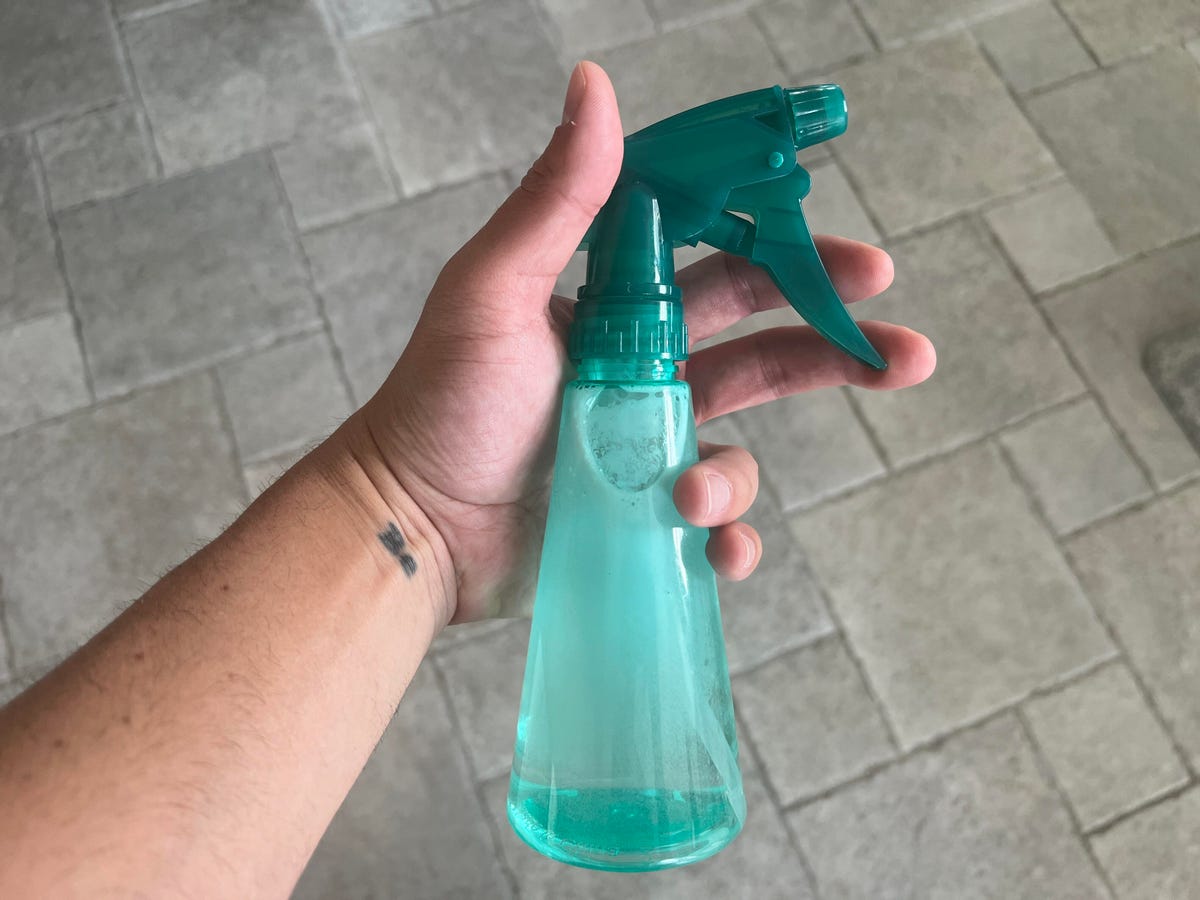Summer is all about fun but all that coming and going can leave the house dusty and dirty. when it comes time to wipe down kitchen counters, coffee tables, bathroom tiles and appliances, you can make an all-natural cleaner from common ingredients that works just as well as harsh chemicals and smells better, too.
While those brand-name sprays and wipes are effective and powerful, they aren’t always the best for you or the environment. Some studies have suggested that breathing in the fumes of these products can be downright hazardous to your respiratory system. They can also speed up wear and tear on your furniture, especially if used in excess.
But good news! You’re capable of making an all-natural, all-purpose cleaner with components that are already in your house. Not only is mixing up a DIY cleaning solution more safe and environmentally friendly, but it’s also inexpensive. And it works. From kitchen counters to bathroom sinks, there is nothing this simple mixture of easy-to-find liquids can’t clean. That said, anything that incorporates vinegar has some limitations. Be sure to check out the frequently asked questions after the jump for a detailed list of uses.
Warning: Never combine ammonia or bleach. The two create a toxic chloramine gas that, when inhaled, can be deadly. Always read the ingredient list on any product before mixing it with another. Contact poison control for additional information.
What you’ll need:

You can add other essential oils or lemon juice for a fresh scent and added cleaning power.
How to make it:
- Grab an empty spray bottle and fill it with all of the ingredients, saving the water for last. If you’re targeting tougher-to-clean stains and grime, use the vinegar. If you’re looking for a less abrasive spray that can be used on practically anything, use the soap.
- Pour in the distilled water until it fills the bottle. Depending on the bottle’s size, you may not use all of the water. This is okay. A slightly stronger solution won’t damage your furniture or finishes.
- Give the bottle a good shake to blend the components.
- Spray as you clean, using a cloth or paper towel to capture dust, streaks, and messes.

A custom all-natural cleaner will boost your spring cleaning.
Why not use soap and vinegar?
Castile soap and vinegar serve two different purposes. The former is more gentle and wipes away dust and dirt that rests on the surface. Vinegar is more intense, and, when applied to areas like a sink drain or bathtub grout, can eliminate stains and smudges that require a bit of acidity and extra elbow grease. The two ingredients also don’t mix well together, resulting in a spray bottle whose contents can easily separate when not in use.

This cleaning solution is great for the kitchen and bathroom.
How long does this all-purpose cleaner last?
About a month if stored in a dry, cool environment.
Why doesn’t this cleaner contain baking soda?

Vinegar and baking soda are a potent combination for getting rid of cookware stains.
It is said that the properties of baking soda (a base) and vinegar (an acid) can essentially cancel each other out when combined. That said, you’re better off using baking soda on its own as a stain lifter or by sprinkling it onto a surface as a mild abrasive before spraying and cleaning.
Read more: These Pantry Staples Will Melt Ugly Cookware Stains in Minutes
Why castile soap?

A little castile soap in place of vinegar will make for a gentler cleaner.
Made most often from olive oil, this nontoxic, biodegradable, and eco-friendly ingredient is safe, effective and won’t damage most furniture. You can use it on practically everything in your home without worry.
Why vinegar, and what not to use it on?

White vinegar is the key to this potent all-purpose, all-natural cleaner.
Vinegar kills bacteria on the surface and is fantastic for cleaning glass and mirrors giving them a smudge-free shine. That said, it shouldn’t be applied to sensitive stones such as granite or marble. The protective sealant can be damaged and leave behind cloudy marks that are both permanent and unattractive.
Are some essential oils better than others?
The scent is entirely up to you and your personal preference. There are, however, a handful that come with added benefits. For example, tea tree, lemon, peppermint, and eucalyptus are natural antibacterials, while grapefruit is a great antiseptic and disinfectant. Be sure to research which essential oils may be toxic to pets.
Why distilled water?

Distilling water is simple and produces the safest base for a cleaning solution.
You want to limit the amount of potential bacterial growth in your solution, and distilled water will accomplish this. Here’s how you can make distilled water at home in five easy steps.


















+ There are no comments
Add yours